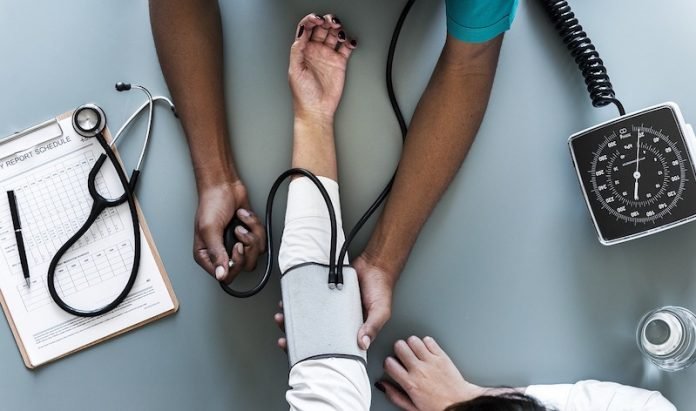
In a recent study, researchers found that the most common way of measuring blood pressure is often inaccurate.
The research was conducted by an international team including researchers from the University of Tasmania, Australia.
Blood pressure is the force exerted in the large arteries with every heartbeat.
There are two numbers in a blood pressure reading, including a high (systolic) and a low (diastolic) value.
The systolic blood pressure is the peak pressure during heart contraction, and the diastolic blood pressure is the pressure during heart relaxation.
Currently, blood pressure is measured via a so-called “cuff method”. In this method, a nurse straps an inflatable cuff over the upper arm of a patient to temporarily cut off the blood supply.
The nurse calculates the blood pressure once the cuff is relaxed.
In the current study, the team found that this commonly used method is also inaccurate.
They conducted three reviews of published studies about blood pressure measurement from the 1950s to 2016. A total of 74 studies with 3,073 participants were included.
The researchers examined three types of blood pressure measurements: intra-arterial aortic blood pressure, intra-arterial brachial blood pressure, and cuff blood pressure.
The first two methods are invasive blood pressure. In the methods, a catheter that measures pressure is inserted inside the artery either at the arm or at the aorta (the major artery just outside the heart).
The team found that cuff blood pressure was accurate when used to measure people with normal blood pressure (lower than 120/80 mmHg) or very high blood pressure (the same or higher than 160/100 mmHg).
The accuracy was up to 80% when compared with the two invasive blood pressure methods.
However, for people whose blood pressure readings were between 120 to 159 (systolic) and 80 to 99 mmHg (diastolic), the cuff method only provided measurements with 50% to 70% of accuracy.
The researchers suggest that it is important to improve the method so that it can measure blood pressure more accurately.
At the meantime, people with high blood pressure or at a high risk of the disease should take medications and make lifestyle changes to control the condition.
This can help lower risks of heart disease and stroke.
One author is James Sharman, Professor of Medical Research and Deputy Director, Menzies Institute for Medical Research., University of Tasmania.
The study is published in the Journal of the American College of Cardiology.
Copyright © 2019 Knowridge Science Report. All rights reserved.



